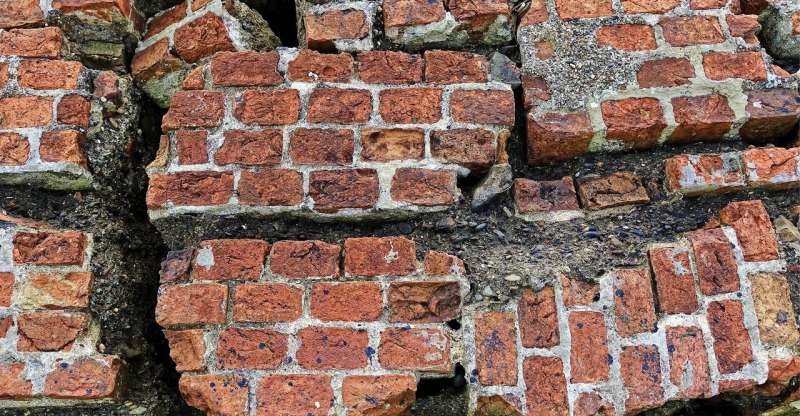New fault zone measurements could help us to understand subduction earthquake

A research team from the University of Tsukuba has conducted detailed structural analyses of a fault zone located in central Japan, with the aim to help identify the specific conditions that lead to earthquake faulting, a hazard that can cause enormous social damage. Subduction is a geological process that takes place in areas where two tectonic plates meet, such as the Japan Trench, in which one plate moves under another and is forced to sink.
Regions in which this process occurs are known as subduction zones and the seismic activity that they produce causes devastating damage through ground shaking and tsunamis. However, understanding these seismic processes can be difficult because of the problems associated with taking measurements from their deepest sections, where much of the activity occurs.
"To overcome this problem, we examined fault rocks exhumed from source depths of subduction earthquakes, which are now exposed at the land surface at the Jurassic accretionary complex in central Japan," explains study lead author Professor Kohtaro Ujiie. "At this complex, we were able to examine pseudotachylyte, a solidified frictional melt produced during subduction earthquakes, to help us to infer what may occur in the subduction zones deep beneath the oceans."
The exposed fault zone was characterized through a range of measurements such as scanning electron microscope and Raman spectroscopy to provide a detailed picture of the pseudotachylytes and make some constraints about the heating conditions at the time of formation. "The pseudotachylyte at the site derived from the frictional melting of black carbonaceous mudstone together with chert, which accumulated under low-oxygen conditions," says Ujiie. "Thermal fracturing tends to occur along slip zones flanked by rocks with high thermal diffusivities such as chert, and may happen during seismic slip within the Jurassic accretionary complex. This thermal fracturing could lead to a fluid pressure drop in the slip zone and reduction in stiffness of surrounding rocks, potentially contributing to the generation of frictional melt and acceleration of seismic slip."
The seismic slip processes recorded in the studied complex may be applicable to other fault zones with similar rock layers, such as the Japan Trench subduction zone. Therefore, the data gathered from this area could be useful in future attempts to describe or model the subduction earthquakes that lead to ground shaking and tsunami risk.
More information: Kohtaro Ujiie et al. Frictional melting and thermal fracturing recorded in pelagic sedimentary rocks of the Jurassic accretionary complex, central Japan, Earth and Planetary Science Letters (2020). DOI: 10.1016/j.epsl.2020.116638
Journal information: Earth and Planetary Science Letters
Provided by University of Tsukuba



















